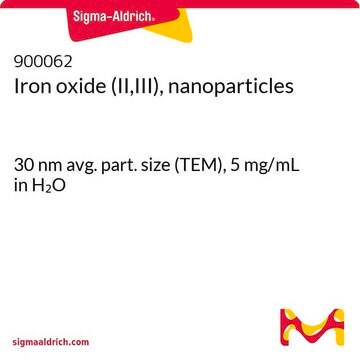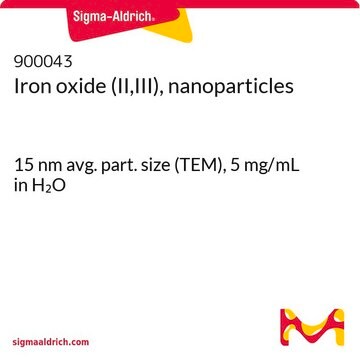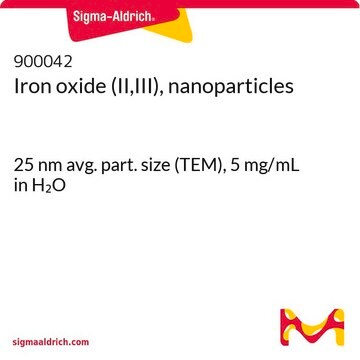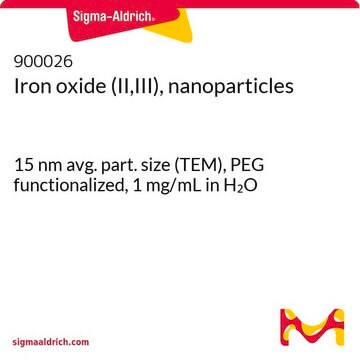900092
Iron oxide (II,III), nanoparticles
15 nm avg. part. size (TEM), streptavidin functionalized, 1 mg/mL in H2O
About This Item
Recommended Products
form
dispersion
nanoparticles
Quality Level
concentration
1 mg/mL in H2O
avg. part. size
15 nm (TEM)
functional group
streptavidin
storage temp.
2-8°C
Looking for similar products? Visit Product Comparison Guide
Application
Other Notes
Storage Class
12 - Non Combustible Liquids
wgk_germany
WGK 2
flash_point_f
Not applicable
flash_point_c
Not applicable
Choose from one of the most recent versions:
Already Own This Product?
Find documentation for the products that you have recently purchased in the Document Library.
Articles
Nanoparticle imaging agents enable stem cell tracking via various in vivo imaging techniques.
Professor Hui Mao explores the use of superparamagnetic iron oxide nanoparticles (INOPs) that offer an alternate contrast-enhancing mechanism.
Prof. Yadong Yin discusses various synthesis methods of magnetite nanocrystals and their applications in different fields.
Our team of scientists has experience in all areas of research including Life Science, Material Science, Chemical Synthesis, Chromatography, Analytical and many others.
Contact Technical Service







